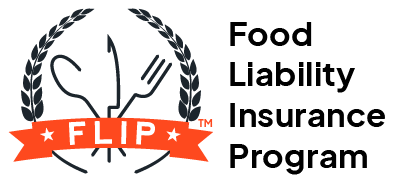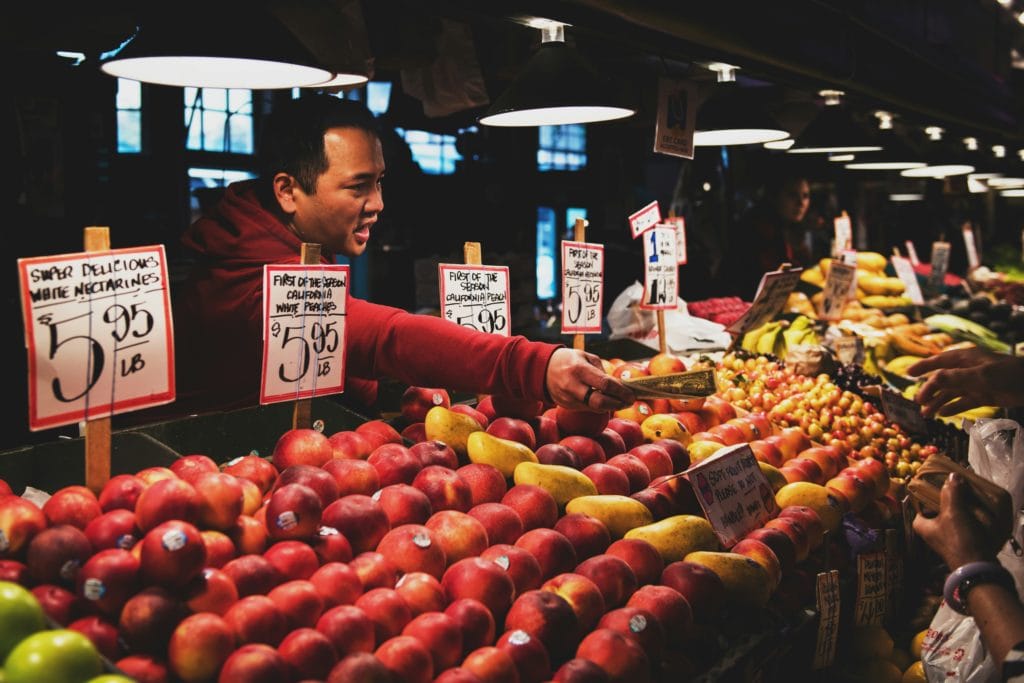Last Updated: January 24, 2024
Farmers markets in the U.S. have seen a major surge in popularity over the past few decades. In fact, the number of farmers markets has grown from just 2,000 in 1994 to over 8,600! Needless to say, selling at a farmers market can be a fun and profitable venture for your business, whether you’re a farmer or a home-based baker.
As you prepare for another farmers market season, Food Liability Insurance Program (FLIP) is here to help with some tips for how you can maximize profits and get the most out of your vending experience:
- Vary Your Selection
- Offer Free Samples
- Greet Your Customers
- Offer Cashless Payments
- Display Prices Clearly
- Offer Bags and Wagons for Transporting Items
- Pack Essentials for the Day
- Create an Aesthetically Pleasing Display
- Make Sure You’re Properly Licensed and Insured
1. Vary Your Selection
Variety is the spice of life, and when it comes to selling at a farmers market you can benefit greatly from offering diverse options.
If you sell your own produce, be sure to grow items that you can sell at all points in the season. This way, you’ll be able to get the most out of the farmers market by selling throughout the whole season, instead of only having enough produce to sell towards the beginning or end.
Better yet, grow produce that you can sell at year-round farmers markets. While many markets remain seasonal, year-round markets are growing in popularity all over the country, with New York City, New York and Portland, Oregon being the best cities for winter markets.
If you plan on selling premade food products at the market, you can also vary your selection by offering seasonal specialties. Use seasonally available ingredients and advertise them as limited-time items to increase interest.
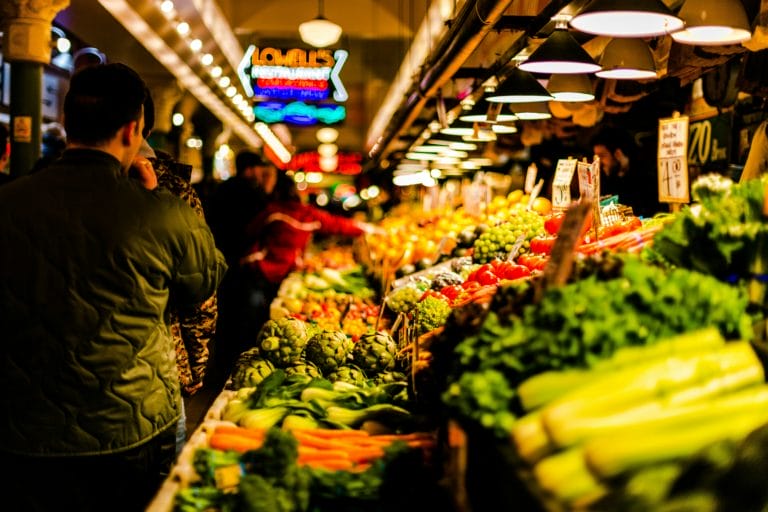
2. Offer Free Samples
Who doesn’t like free stuff? Offering samples of your produce or food products is an excellent way to draw in curious customers and entice them to make a purchase. Many local health departments have rules and regulations surrounding free samples, so make sure to familiarize yourself with those first.
You might also consider offering other freebies, like instructions for cooking vegetables you sell that customers might not be familiar with.
This could be as simple as offering a free recipe card with every purchase of certain veggies, especially for any less-common types like daikon, ramps, and celeriac. Recipe cards or cooking tips can be helpful for more common veggies like kale and Brussels sprouts that are sometimes tricky to prepare well.
This is also a great way to connect with your customers on a personal level—maybe one of the recipes you share is a generational family favorite, or the sample you provided is so good the customer just has to let you know how much they’ve enjoyed it. Even less adventurous customers will be more open to trying new produce if they know how to prepare it or have tried it first!
3. Greet Your Customers
This may seem obvious, but it’s still worth saying—taking the time to greet each of the customers who visits your booth can make a world of a difference!
Speaking from personal experience, when a farmers market vendor greets me I immediately feel more comfortable at their booth and am more likely to purchase something. When I’m taking a look at someone’s produce and they don’t acknowledge my presence, I’m much more likely to slip away without buying anything.
Greeting your customers doesn’t necessarily mean you have to strike up a conversation with them, especially if they don’t seem to be excited to chat. If they are talkative, feel free to take things beyond a simple “hi,” but simply acknowledging each person who visits your stand is often enough to make for a great experience.
4. Offer Cashless Payments
With 41% of Americans reporting that none of their usual weekly payments are made in cash, it’s no surprise that cashless payments are on the rise. Even though many farmers markets have ATMs, you can make purchasing items from your booth even easier for your customers by offering cashless payments.
Getting cash at an ATM usually means standing in line and paying a fee, so any way you can make your customers’ lives easier will make a big difference in how likely they are to purchase from you. To start accepting cashless payments, you’ll need a point-of-sale (POS) system. Below are a few options popular with other farmers market vendors:
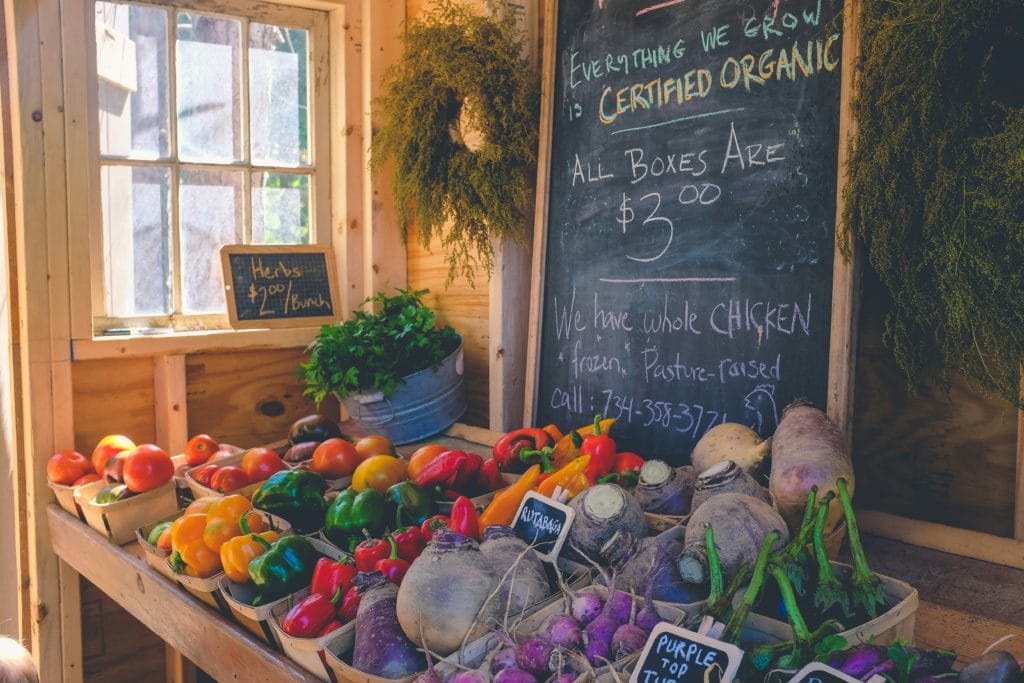
5. Display Prices Clearly
Think back to a time you wanted to purchase something—at a grocery store, market, etc.—but you couldn’t find the price of the item. Maybe you asked an employee about the price, or maybe you put it back on the shelf. Either way, it probably wasn’t the best buying experience you had.
To make sure anyone who visits your booth has an easier time, it’s crucial to clearly display the prices of all the produce/items you sell. Some sellers will use whiteboards, but prices are easy to smudge or wipe off throughout the day.
Try using multiple small chalkboards set up around your booth with the prices of nearby items. Chalkboards also have a fun, rustic feel about them that can make your display intriguing to market attendees.
6. Offer Bags and Wagons for Transporting Items
Many people bring their own bags to a farmers market. But there may be a few who either just walked in to look without intending to buy anything or others who already have their bags full but still want to buy something.
You can make your customer’s day simply by offering paper bags for anyone who needs them! If they know they have a way to carry around their goods, they’ll be more likely to buy something from you.
To take things one step further, consider offering wagons for people to transport large or bulky produce to their cars. This simple, thoughtful gesture can help increase your sales by making it easier and more convenient to purchase from you.
7. Pack Essentials for the Day
Manning your booth at the market is tiring work. To keep up the energy and good spirits you need to sell your goods, it’s important for you to have everything you need to stay comfortable throughout the day:
- Water
- Weatherproof clothing
- Sunscreen
- Comfy shoes
- Hand sanitizer
- Snacks
- Portable charge
- First Aid Kit
8. Create an Aesthetically Pleasing Display
Looks aren’t everything, but they are important to potential customers passing by your booth! If your display looks appealing, people are more likely to come see what you’re selling (and purchase something while they’re at it).
Below are a few ways you can wow market attendees with your booth:
- Put your best food forward: Display the most colorful produce at the front of your stall. Even if it isn’t the most popular, it’ll catch the eye of people walking past your booth and will entice them to check out your other offerings.
- Draw attention with stacked food: By stacking your produce instead of laying it out flat on the table, you give your booth the appearance of abundance.
- Use trays and baskets: To keep your stacked items organized, display them in baskets for a rustic look. Just make sure the baskets are clean and in good shape.
- Bring in your brand colors: Using tablecloths and signage that matches your brand colors makes you look more professional and put together. If you have a logo, display it on a banner across or behind your table to familiarize people with your brand.
- Display pictures of your farm: Part of why people shop at farmers markets is because they want to support small businesses and shop local. Remind them of this with photos of your farm so they can see where their food comes from. For other food businesses, pictures of you and/or your employees preparing food in your home kitchen or commissary can achieve a similar effect.
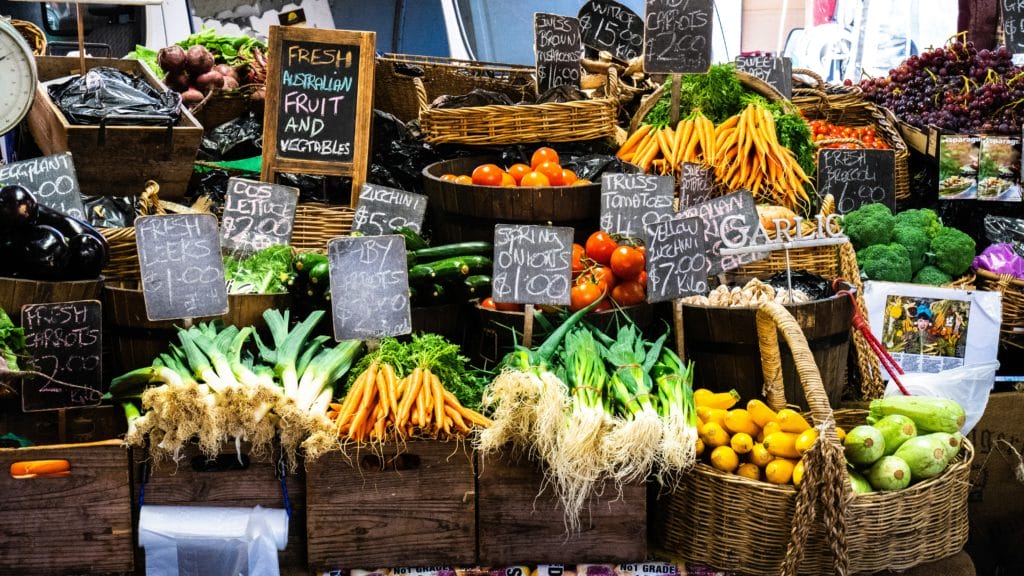
9. Make Sure You’re Properly Licensed and Insured
You won’t be able to make any money at farmers markets if you don’t have the proper license to sell at them! Make sure you have completed all the necessary paperwork you need to legally sell your food at the market. The exact requirements may vary depending on where you live, so check with your local government to learn what you need to submit.
Additionally, many farmers markets will not allow you to rent a booth until you provide proof of insurance. This is because there are certain risks associated with selling at a farmers market and they do not want to be held responsible for your liability.
This includes incidents such as:
- While setting up your booth, your table scratches the floor of the venue and requires repairs.
- Your generator is stolen while you step away from your booth on a break.
- An unlabeled allergen causes a reaction for one of your customers that results in hospitalization.
All of the above incidents can result in expensive claims that can seriously harm your profits or even force you to close your business. However, FLIP is here to help! Our farmers market insurance includes general liability, product liability, and damage to premises rented coverage to properly shield your business.
In 10 minutes or less, you can get farmers market insurance starting at $25.92 per month through our simple online checkout process—no need to speak to an agent. Get insured and enjoy peace of mind today!
Wishing You a Prosperous Farmers Market Season!
Selling at the farmers market can be a fantastic way to bring in profits for your farming or food business. Now that you know how to keep those profits coming and growing this year, you’re all set for a fabulous market season.
Whether you’d like more tips on how to succeed as a farmers market vendor or want to learn more about how farmers market insurance can protect your business, FLIP has you covered. Best of luck at your booth this year!

By Alex Hastings
Alex is a Marketing Copywriter at Food Liability Insurance Program (FLIP). In her free time, she enjoys reading, birding, traveling, and finding any excuse to get brunch.
